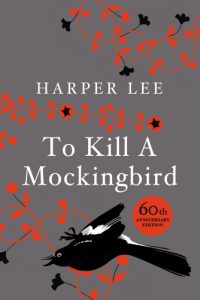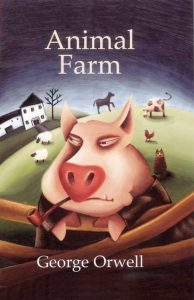
[ad_1]
When you ask a fiction writer what her story is about, she will usually explain the plot. Yes, plot is what the story is about, but theme is what the story is really about, simmering below the plot. In this post we’ll look at 3 ways to infuse your story with theme.
Do you really have to have a theme for your book? Not necessarily in a formal sense—but think about theme as some essential takeaway thought you want to leave your reader with when they finish the book. Theme speaks to your plot, but more so to the heart of your story. One way to get to your theme is to ask yourself just why you are writing this book.
Do you have a message or something you want to say to your readers, some commentary on life, society, government, faith, or some other issue? Even if you are not trying to push a “message” per se, your book should be about something.
What Is Theme?
Theme isn’t a word, like justice. Theme is better understood as a question or a scenario. Theme is the character’s inner motivation made universal, and every story can have theme at its heart.
As you work on infusing your story with theme, consider posing your theme as a question. Instead of bluntly stating your theme at key moments in your story, allow your characters to grapple with it organically. This approach invites readers to engage with the theme on a deeper level, sparking introspection and critical thinking.

Take, for example, the novel The Martian by Andy Weir. While the plot primarily revolves around the survival of an astronaut stranded on Mars, it also raises profound questions about the value of human life and the lengths we would go to save a single individual.
These questions emerge naturally as the protagonist faces life-threatening challenges. By weaving these inquiries into the narrative, the author invites readers to ponder the ethical and moral dimensions of the story, making the theme of human resilience and the sanctity of life all the more poignant.
By employing this technique, you can let your characters, their actions, and their dialogues become vessels through which your theme is explored. This not only makes the theme more relatable but also ensures that it emerges naturally from the story’s progression.
Here are three ways to infuse your story with theme:
1. Explore Your Protagonist’s Motivation
One compelling way to integrate theme into your story is by delving into your protagonist’s motivation. Your character’s inner journey requires that they confront the values and morals they uphold. As they navigate challenges, make choices, and undergo transformation, the theme can subtly evolve and take shape.
Consider the classic hero’s journey, where the protagonist embarks on a quest, faces trials, and emerges transformed. This transformation is often synonymous with the revelation of the story’s theme. The protagonist’s growth and change illuminate the overarching message or lesson.

For instance, in the classic movie The Wizard of Oz, Dorothy’s journey to the Emerald City isn’t just about finding her way home; it’s a journey of self-discovery and the realization that the power to achieve her goals is within her all along. This theme of self-belief and inner strength emerges as Dorothy undergoes her trials and overcomes obstacles. Viewers root for her as she learns her life lessons and finds the happiness that eluded her at the start of the movie.
One of the movie’s themes is uttered by Dorothy in the last words of the final scene: “There is no place like home!” And who can forget her timeless words about what she learned from her adventures: “If I ever go looking for my heart’s desire again, I won’t look any further than my own backyard; because if it isn’t there, I never really lost it to begin with.” It doesn’t get more profound than that!
2. Give Voice to Opposition
Conflict is the lifeblood of storytelling, and it can be a potent tool for bringing out themes. Don’t shy away from presenting opposing viewpoints and beliefs within your story.
Imagine a scenario where your protagonist is passionate about a particular cause, be it justice, racial equality, or environmental conservation. To make your theme come to the forefront, introduce characters who hold conflicting beliefs or stand in opposition to your protagonist’s values. This clash of ideologies creates meaningful conflict within your narrative.

In Harper Lee’s To Kill a Mockingbird, Atticus Finch defends Tom Robinson, an African American man wrongly accused of raping a white woman in a racially divided town. Atticus’s unwavering belief in justice and his willingness to challenge the prevailing prejudices of his society sets the stage for a powerful exploration of themes related to racism, injustice, and moral courage. The antagonist, in this case, is not just a person but a prevailing societal attitude, making the conflict deeply thematic.
By allowing your antagonist to possess strong convictions and passions, you breathe life into your themes. Meaningful conflict born out of passionate beliefs enriches your story.
3. Use Symbolism and Motifs
Themes in fiction can be powerfully conveyed through symbolism and motifs. These recurring symbols or literary devices can be vehicles for bringing out your theme.

Consider the symbolism in George Orwell’s Animal Farm in which farm animals revolt against their human oppressors, forming an animal-led society that promises equality and justice. Over time, however, the pigs in the leadership roles become corrupted, symbolizing the erosion of the ideals of the revolution. The farm itself becomes a symbol of the failed utopia and the theme of the corrupting influence of power.
Symbols like the pigs and the farm serve as visual cues that reinforce the story’s thematic undertones. They provide readers with a tangible representation of the story’s deeper message, making the theme more accessible and resonant.
Can you think of one or two visuals—something in nature, an important object, or maybe a locale or location that could embody a sentiment or belief your character has? In my novel Conundrum, my character, Lisa, is struggling with infertility. At the end of the book she is finally pregnant. I have the final scene at New Year’s, which promises new beginnings. She sits outside looking at the bare trees, knowing soon their limbs will sprout new leaves. These elements of the time of year and the metaphor of the tree drive home my novel’s themes of hope and renewal and healing.
Incorporating symbolism and motifs into your narrative requires thoughtful planning and execution. These elements should be woven into the fabric of your story, appearing at key moments to underscore your themes.
In conclusion, keep in mind that theme is the heart of any story. By employing techniques such as exploring your protagonist’s motivation, giving voice to opposition, and using symbolism and motifs, you can infuse your story with theme in a powerful way. Ask yourself: What is my story really about? That’s where you’ll find your themes.
Feature Photo by Nong on Unsplash
[ad_2]